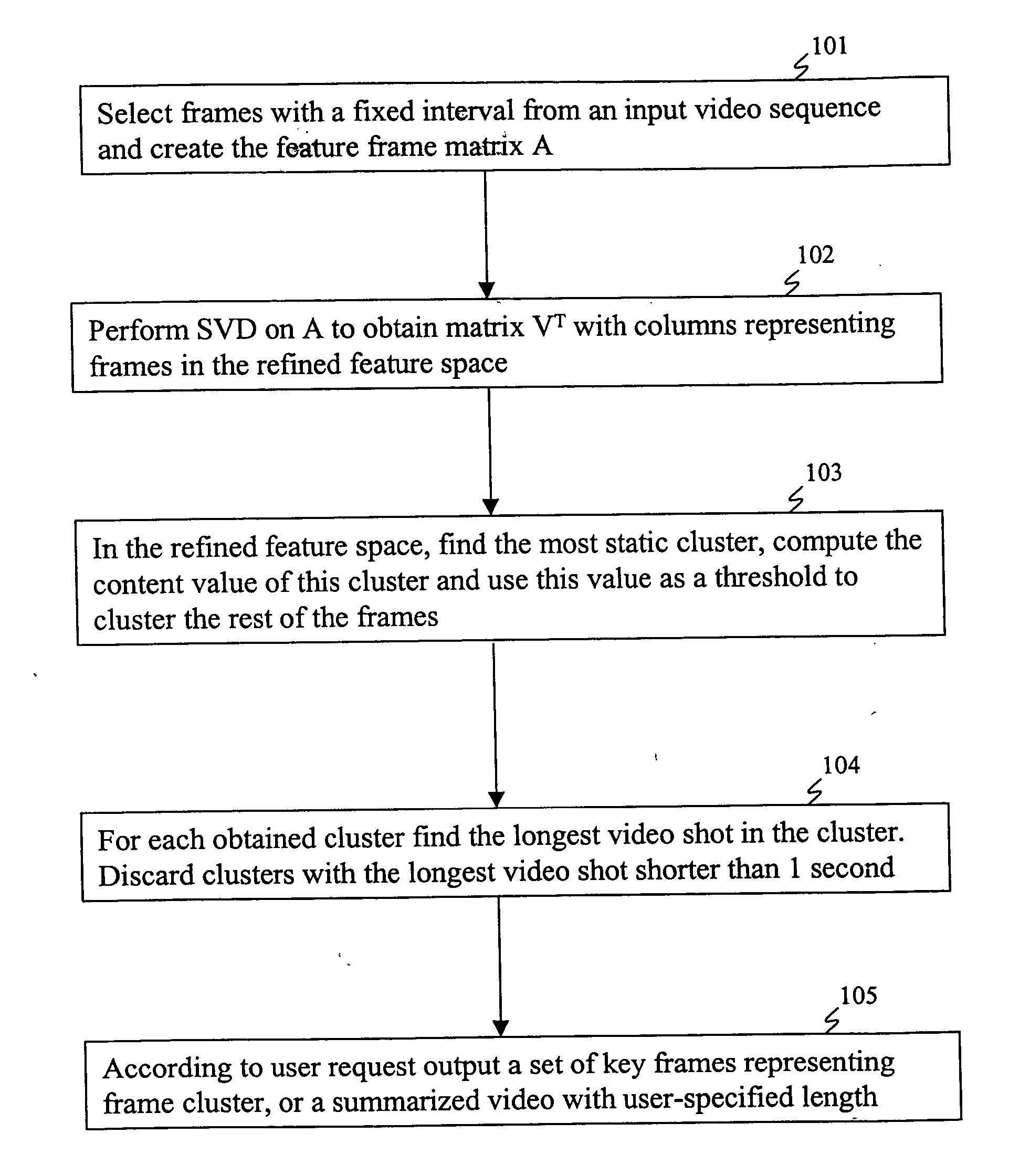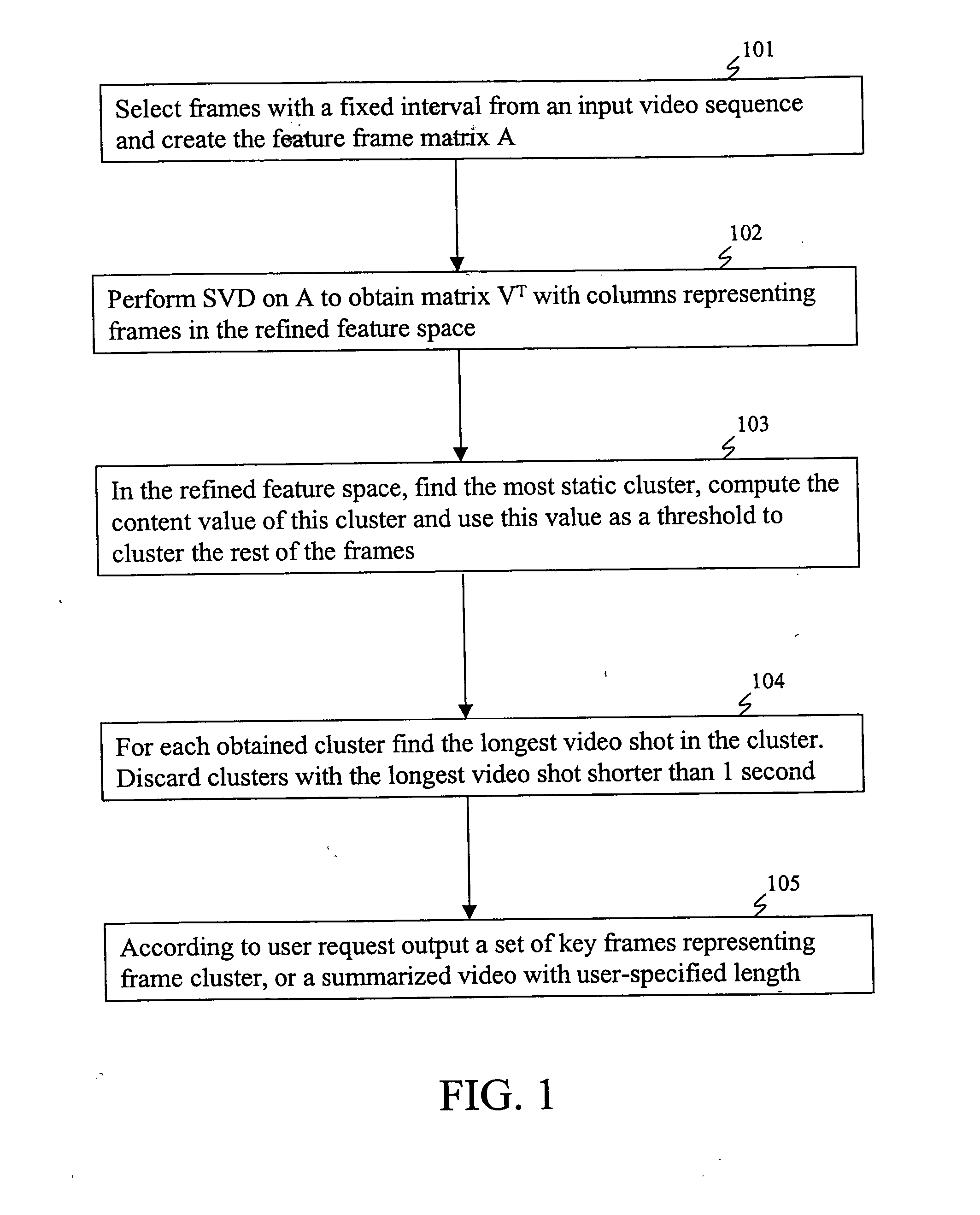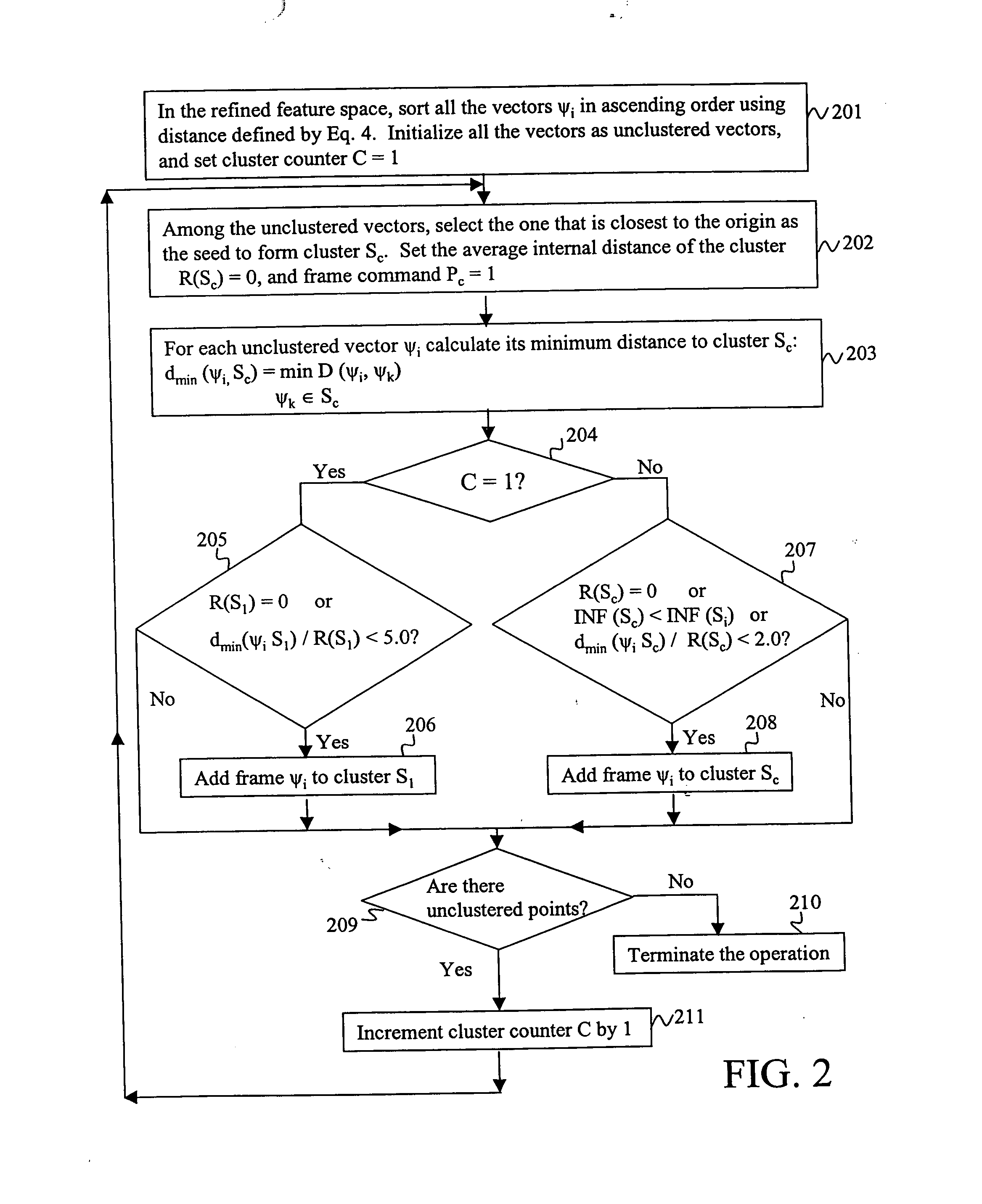Method and system for segmentation, classification, and summarization of video images
a video image and classification technology, applied in the field of video summarization, can solve the problems of difficult video handling, difficult positioning, and worsening the situation on the intern
- Summary
- Abstract
- Description
- Claims
- Application Information
AI Technical Summary
Benefits of technology
Problems solved by technology
Method used
Image
Examples
Embodiment Construction
[0035] The inventive video summarization technique aims to automatically create an optimal and nonredundant video summarization. The invention also seeks to fulfill different user requirements for video browsing and content overview by outputting either an optimal set of keyframes representing the input video sequence, or a summarized motion video of the original video with the user specified time length.
[0036] The inventive video summarization method uses the aforementioned singular value decomposition as its basic working instrument. Singular value decomposition is known for its capabilities of deriving a low dimensional refined feature space from a high dimensional raw feature space, and of capturing the essential structure of a data set in the feature space. See S. Deerwester, S. Dumais, G. Purnas, T. Landauer, and R. Harshman, “Indexing by latent semantic analysis,”Journal of the American Society for Information Science, vol. 41, pp. 391-407, 1990. To reduce the number of fram...
PUM
| Property | Measurement | Unit |
|---|---|---|
| color distributions | aaaaa | aaaaa |
| color distribution | aaaaa | aaaaa |
| time | aaaaa | aaaaa |
Abstract
Description
Claims
Application Information
 Login to View More
Login to View More - R&D
- Intellectual Property
- Life Sciences
- Materials
- Tech Scout
- Unparalleled Data Quality
- Higher Quality Content
- 60% Fewer Hallucinations
Browse by: Latest US Patents, China's latest patents, Technical Efficacy Thesaurus, Application Domain, Technology Topic, Popular Technical Reports.
© 2025 PatSnap. All rights reserved.Legal|Privacy policy|Modern Slavery Act Transparency Statement|Sitemap|About US| Contact US: help@patsnap.com



